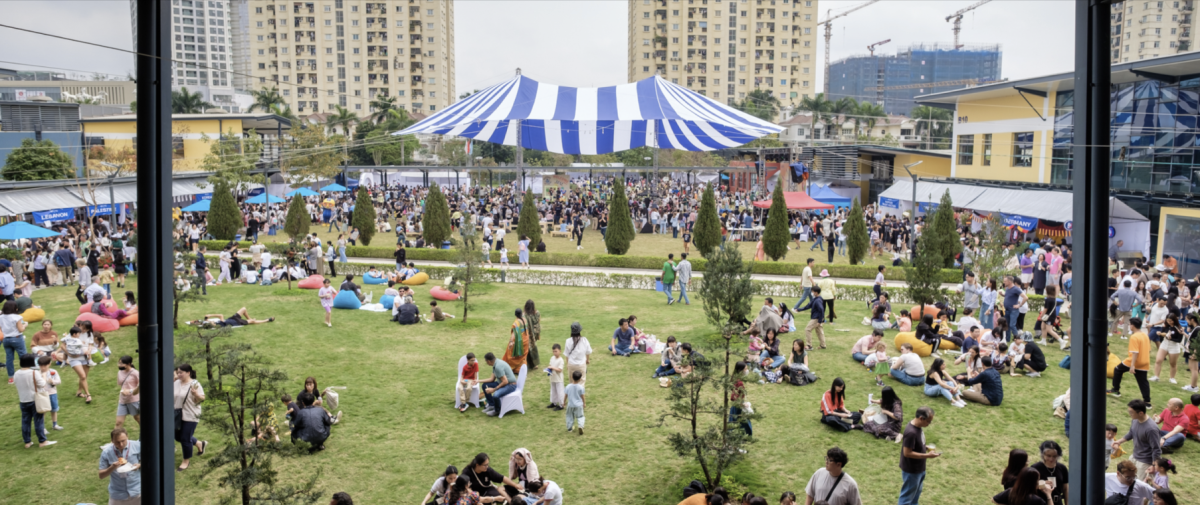The Spring Fair is one of the most significant events UNIS hosts, with publicity forms and flyers being sent to us all the way back in November. As the seasons got warmer, more information was distributed and excitement levels started to rise. This was UNIS’s first Spring Fair since 2019, and it was either go big or go home. Yet, after the Spring Fair, many attendees had mixed opinions on the fair, from students to volunteers to service group members, the sense of a vivacious and vivid festival was not shared by all
To collect information on how students felt about the Spring Fair, I sent out a survey to all high schoolers with questions regarding the quality, price, and their overall enjoyment of the fair. Out of the 45 responses, the main issue was the pricing: over 70% of respondents felt that prices were unreasonable. Even more were upset specifically about food pricing. Despite the diversity and deliciousness on sale, many responded that the food was too expensive, especially considering the pre-paid ticket fee. One student said, “Some prices didn’t align with others […] items were priced higher than their worth.” Others complained that students were still forced to buy tickets despite their involvement in service groups. One quote that summarised the responses was, “100k just for overpriced food.”
Navigating the Spring Fair was another hot topic with students. 60% of respondents found the layout of the fair to be difficult to understand/mediocre. Understandably, the fair covered a large space and had many booths and vendors, so it was likely to be confusing. Though students appreciated the various maps around campus and the categorization of booths, many felt the need for more space between booths to avoid messy queues and crowding. One response suggested the use of QR codes to access the map. This would be an incredibly useful resource if placed on tickets, which would help those who had difficulty with the layout easily access the map. Service learning leaders also stated that given the importance of the fair to service groups, they found the placements of their booths unfair, and wished that they had a more prominent area instead of being in the very back. Spring Fair staff have acknowledged this, agreeing that service booths were somewhat hidden.
While pricing and navigation were important elements of the Spring Fair, the substance was most important; the food, merchandise, and activities on offer were the main features of the fair. When questioned about the quality of these items, more than 80% of students were satisfied. Students complimented the food provided; “good food” and “yum” often appear in responses. The diversity of options further increased enjoyment; with stalls from Australia to Egypt, and activities from bouncy castles to hair dying, there were few complaints about the lack of variety.
Despite all their issues with the fair, 75% of student respondents would attend the Spring Fair again, and 85% of responses stated an overall enjoyment ranging from satisfactory to excellent. To take a broader look at opinions on the Fair, I interviewed also some volunteers who ran a food booth. While they acknowledge it was an overall fun and entertaining experience, many said that they were shocked when they realised that as a volunteer they not only were giving up their time and effort but also had to buy a ticket to enter. One interviewee said: “I thought it was quite ridiculous because I made food for the Spring Fair and I still need to pay.” Though a rewarding job, more would be happy to volunteer if they didn’t need to buy a ticket. Not only were volunteers dissatisfied with prices, but business vendors also complained that the use of vouchers was not explained clearly. Many realised too late that they could only use vouchers in the Spring Fair, unable to exchange them for cash. This meant that business vendors would not make a profit if they did not use all their vouchers. The whole system seemed unorganized and chaotic with few interviewees supporting the method. This also explains why towards the end of the Spring Fair, businesses only accepted cash, thus leaving attendees unable to use the vouchers they’d purchased. While this method may have made it easier for UNIS to keep track of finances, it negatively impacted both buyers and sellers.
Personally, I think UNIS met its goal of going big and not going home, though perhaps too big on prices and too small on space. Students really seemed to enjoy the experience and the majority were satisfied with the spring fair. Personally, I felt the fair was a fabulous experience. Booths used their decorations to make bold statements, each one modeling a different outfit. The scents of food wafted and swirled with the ebullience in the atmosphere, accompanied by the nonstop performances, each one better than the last. These efforts clearly show a diligent community coming together to make Spring Fair a memorable day for all.





